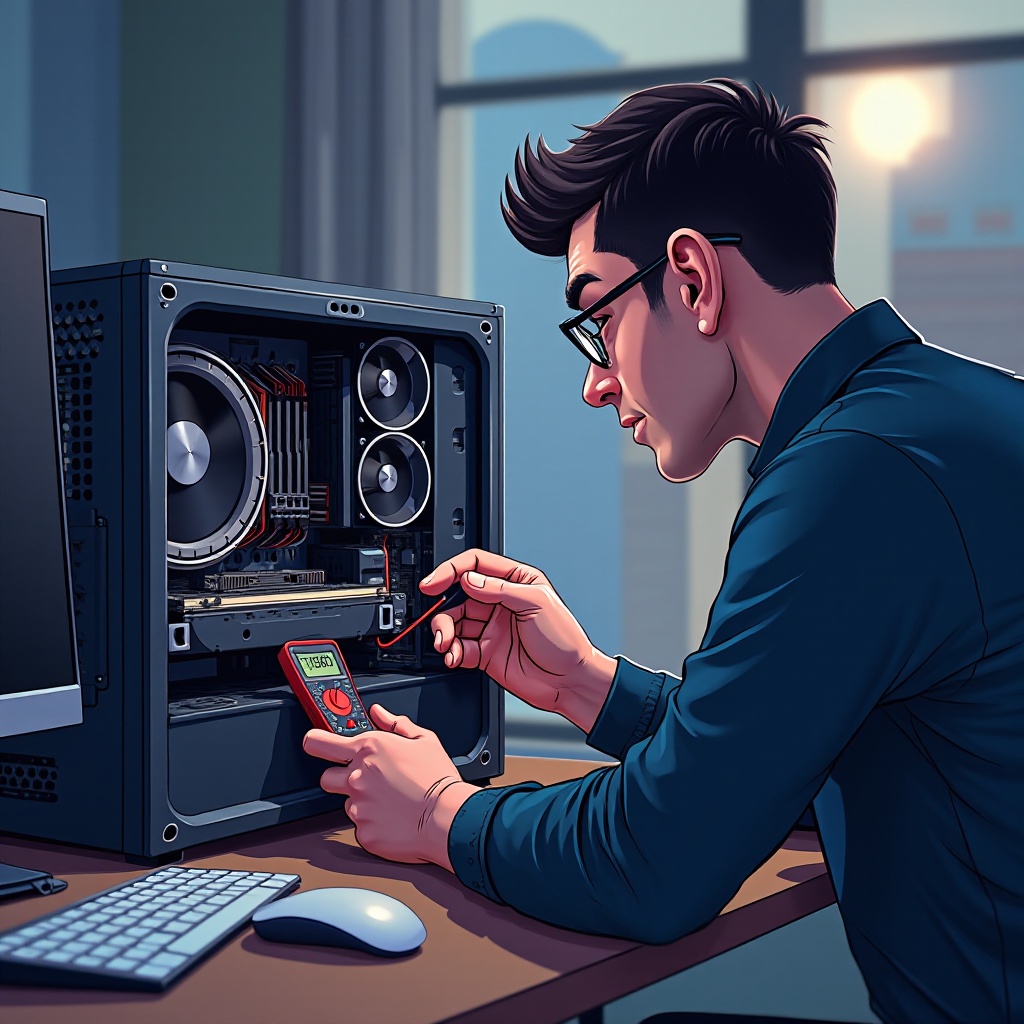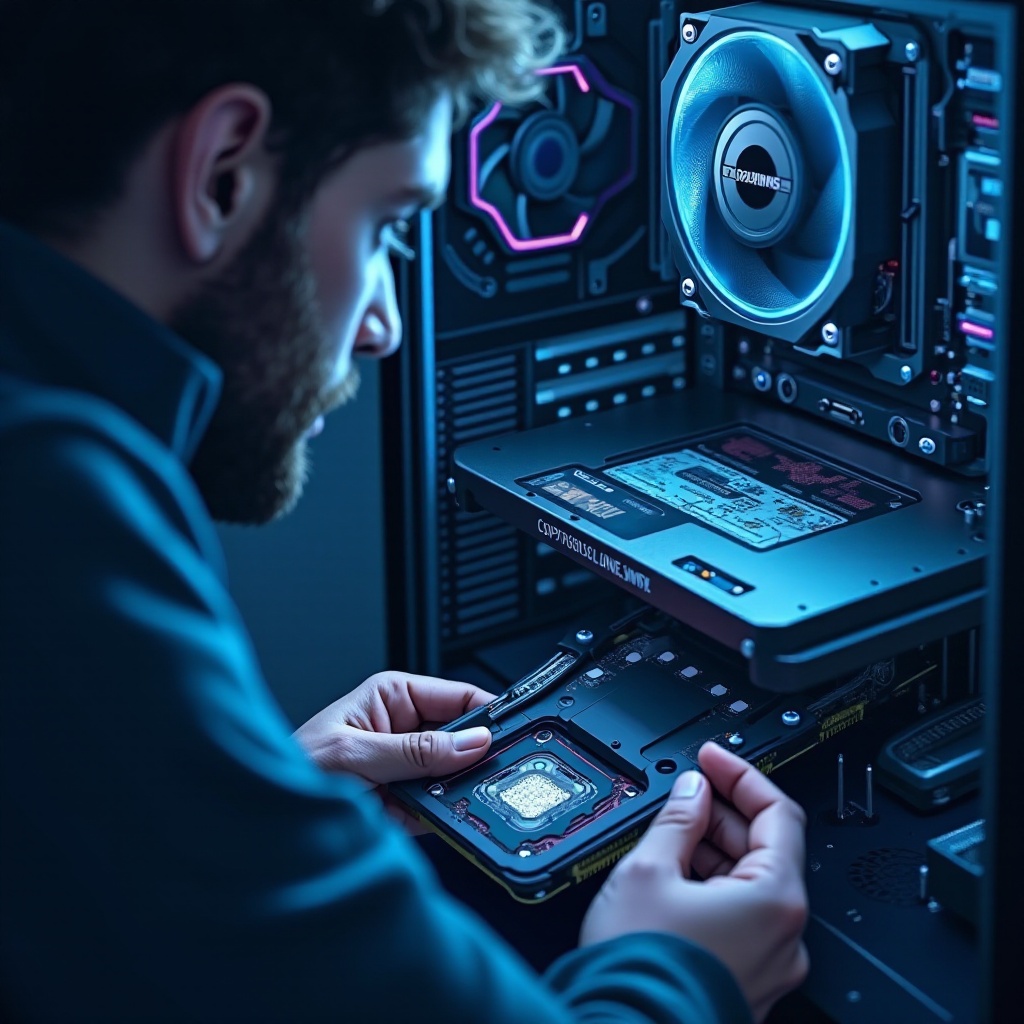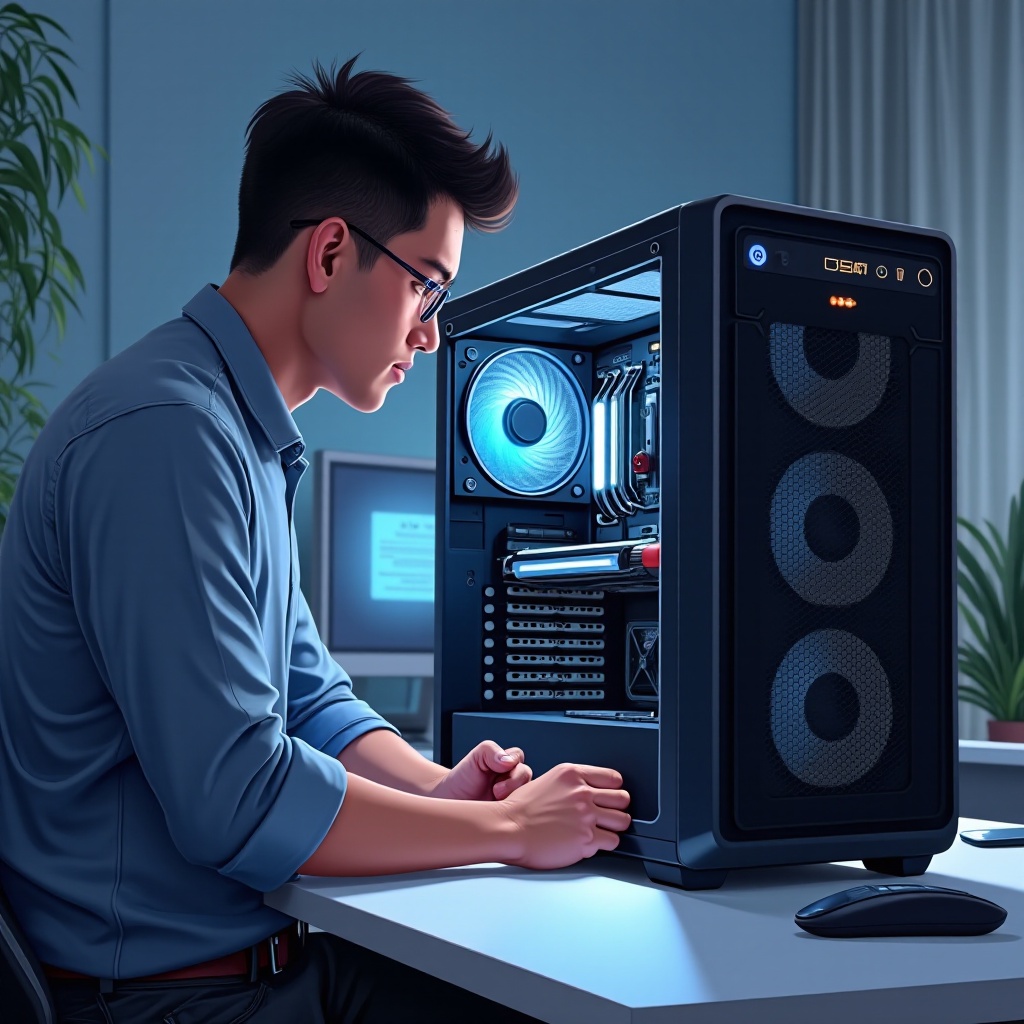Introduction
Experiencing a non-responsive PC after installing a graphics card is a common yet frustrating issue. It’s a situation many users face, where plugging in a graphics card results in the PC failing to power on. To tackle this problem effectively, understanding both the potential hardware and software conflicts is essential. This guide will provide a comprehensive approach to diagnosing and resolving issues that prevent your computer from powering up, ensuring a seamless computing experience.

Understanding the Core Issue
Identifying the root cause is the first step towards a solution. A PC that won’t power on with a graphics card might point to compatibility issues, power supply inadequacies, or even faulty hardware. Common causes include loose connections, outdated software, or incompatible drivers. By methodically examining each potential cause, you can determine whether the issue is hardware-related or stems from software conflicts, thereby facilitating a focused troubleshooting strategy.
Initial Hardware Examination
Checking Power Supply and Connections
Begin with basic checks. Confirm that all power cables are securely attached, and verify your power supply unit’s (PSU) functionality. Use a multimeter to ensure correct voltage outputs and confirm that the PSU meets the power demands of your graphics card.
Inspecting Graphics Card and Slot
Remove and reinsert the graphics card to ensure it’s seated properly in the PCIe slot. Look for any visible damage or dust in the connector pins that might impede a proper connection.
Verifying Peripheral Compatibility
Check that no peripheral devices are causing boot issues by disconnecting all non-essential devices such as USB drives or external monitors, and then attempt to power on the PC.
BIOS and Software Solutions
Updating BIOS and Drivers
Look for and apply the latest BIOS updates for your motherboard, as these updates might enhance hardware compatibility. Also, make sure you have updated drivers for your graphics card to avoid compatibility issues.
Resetting BIOS to Default Settings
Resetting the BIOS to default settings can negate incorrect configurations often leading to power-on issues. This reset might solve any conflicts preventing system initialization.
Checking for Software Conflicts
Software like overclocking applications can sometimes interfere with hardware initialization. Boot into safe mode and uninstall any potentially troublesome software to see if it resolves the problem.
Testing and Isolating Components
Testing with Minimal System Setup
Run your system with minimal hardware—CPU, RAM, and GPU only—to check if other components are causing the issue. This approach can help narrow down the source of the power-on problem.
Substituting with Known Good Components
Swap components with ones you know are functioning correctly, like using an alternative graphics card or PSU, to pinpoint faulty hardware.
Utilizing Diagnostic Tools
Use diagnostic tools or software such as POST code readers to identify specific hardware errors relating to the graphics card installation.
Advanced Troubleshooting
Analyzing Power Supply Unit Capabilities
Examine your PSU to verify it provides adequate wattage. An underpowered PSU can fail to supply enough power to the graphics card, causing the PC not to power on.
Inspecting for Physical Damage on GPU
Check the GPU for physical damage, like burnt circuits or broken components. These issues might require professional repair or replacement.
Evaluating Motherboard Issues
If everything else checks out, the motherboard may be at fault. Inspect it for damages or test the system with a different motherboard, if possible, to rule out this issue.

Seeking Professional Assistance
If troubleshooting efforts don’t succeed, consulting a professional technician is advisable. Professionals have advanced diagnostic tools and expertise to offer precise solutions. They can assess whether the graphics card or any other component is defective and requires replacement. Additionally, they might identify rare software conflicts beyond the average user’s capability. Seeking professional help can save you time, avoid potential damage, and ensure your system runs efficiently.

Conclusion
When a PC won’t power on with a graphics card plugged in, it can be overwhelming. However, systematically addressing each potential cause—from securing connections to evaluating power supply adequacy—can effectively highlight the problem. Further isolating the issue by testing individual components ensures a comprehensive resolution. Should these steps not work, consider seeking professional guidance to mitigate prolonged downtime. With patience and a detailed approach, you can restore your computer to full operational status.
Frequently Asked Questions
What are common signs of a failing graphics card?
Signs include graphical artifacts, frequent crashes during GPU-heavy tasks, and a complete failure to power on when installed.
How do I know if my PSU is the issue?
Check PSU wattage against your system requirements. Insufficient power can lead to instability or failure to power on.
When should I consider replacing my graphics card?
Replace it if you see physical damage, it fails system tests, or underperforms consistently compared to specifications.